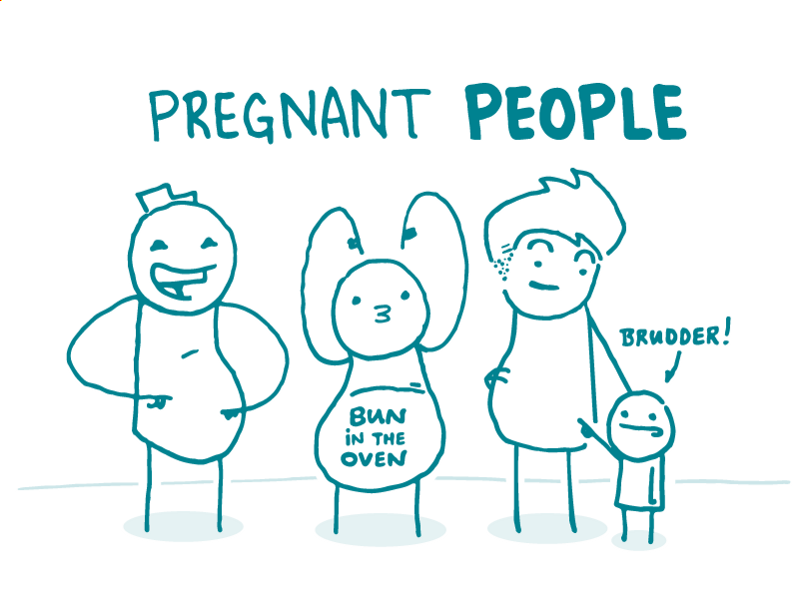
Here at We ❤ Health Literacy Headquarters, we always try to use the most inclusive and relatable terms for our target audiences. That means skipping patronizing terms for older adults, stigmatizing lingo for people in prison, and scary words for moms and babies.
But even seemingly neutral terms can exclude some of the people you’re trying to reach. Take “pregnant women” for example. Seems fine, hey? But women aren’t the only people who get pregnant. Transgender men, gender nonbinary people, and others do, too.
This may seem like no big deal, because the majority of pregnant people identify as women. But simple style choices like the singular “they” and the gender-neutral term “pregnant people” can make your materials more welcoming for soon-to-be parents from across the gender spectrum.
So consider swapping terms like “moms-to-be” for more inclusive terms like “people who are pregnant” — or try using “you” for a more conversational tone.
Instead of this:
- Pregnant women should talk to the doctor about how to stay active.
- Expectant mothers need to see their doctor for regular checkups.
- Folic acid is recommended for all moms-to-be.
Try this:
- If you’re pregnant, talk with your doctor about how to stay active.
- Pregnant people need to see their doctor for regular checkups.
- If you’re pregnant or planning to get pregnant, take folic acid every day.
The bottom line: When writing about pregnancy, try making your materials inclusive for parents-to-be of all genders.
Tweet about it: Writing about #pregnancy? @CommunicateHlth has tips to make #HealthLit materials more welcoming for all pregnant people: https://bit.ly/2PuI54Z
Browse recent posts